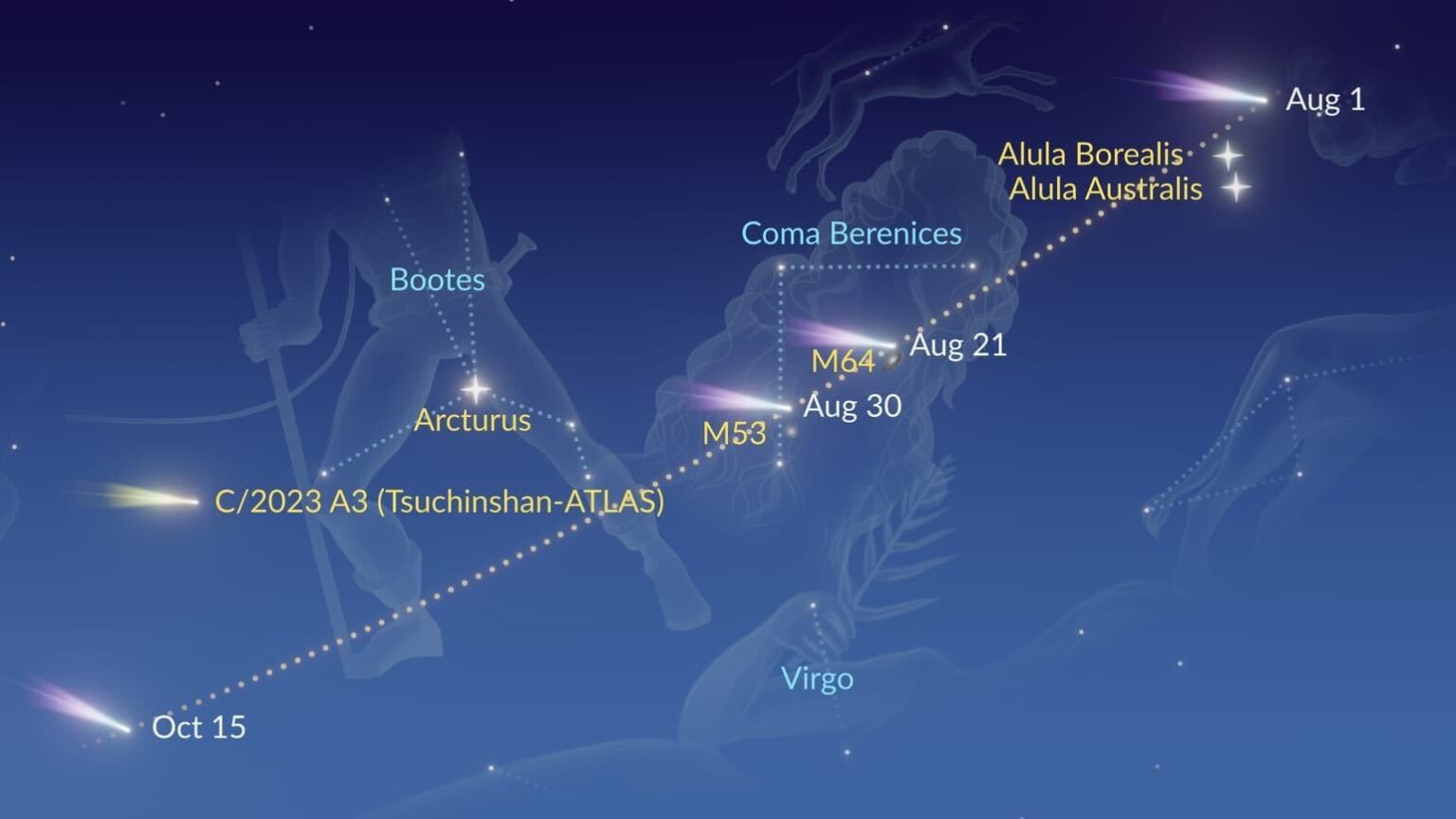In the coming days, comet 13P/Olbers will move through a scattered cluster in the constellation Coma Berenices. Since its brilliance will still be above 9 stellar magnitude, even owners of small telescopes will be able to observe it.

Comet Olbers in Coma Berenices
Comet Olbers (13P/Olbers) is the brightest “tail star” of 2024 so far. This summer in July, it has already managed to pass its perihelion, that is, the nearest point from the Sun. In July, it approached the minimum distance from Earth, and now it is slowly moving away from the center of the Solar System to return to us again in 70 years.
However, before this happens, astronomy enthusiasts can enjoy at least a few more important events involving it. 13P/Olbers is now traveling through the constellation Coma Berenices and will come close to several interesting astronomical objects in the coming days: the globular cluster M53, the scattered star cluster Melotte 111, also called the Coma Berenices cluster, and star γ of this constellation.
Of course, the comet will not actually approach the stars or galaxies. They are much farther away from Earth than it is. However, for observers from Earth, it will be difficult to distinguish Comet Olbers from giant clusters of luminaries. And this makes its observation only more interesting.
How to observe Comet Olbers
In order not to get confused by all these convergences, you need to understand well how and where to look. The first thing to realize is that Comet Olbers can’t be seen with the naked eye. In order to see it, you need at least a small amateur telescope. It must be powerful enough to see individual galaxies in a cluster.
Then you should wait until evening and find the constellation above the western horizon. It is best to orient yourself by Boötes and its brightest star Arcturus. Alternatively, use a planetarium program and check out where the star γ Coma Berenices is located. In fact, it’s a binary system 169 light years away from us.
There are quite a few other much smaller stars to be found near it — this is the Melotte 111 cluster. It is scattered, is 288 light years away from us, and has an age of about 450 million years. It shouldn’t be confused with the Abell 1656 galaxy cluster, also called the Coma Berenices cluster. While the first consists of individual luminaries, the second consists of giant systems, each like the Milky Way.


